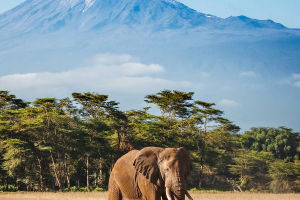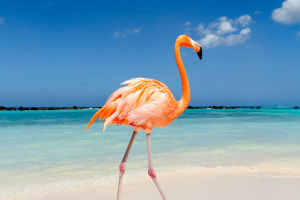Pollution is one of the most pressing environmental challenges of our time, and its effects are felt far beyond our urban centers.
From the smallest insects to the largest mammals, wildlife is under constant threat from the various forms of pollution that pervade our ecosystems.
Pollutants, such as plastic waste, industrial chemicals, and air contaminants, do not just harm the environment—they directly affect animal health and survival. While the issue of pollution can seem overwhelming, taking action to reduce it offers a direct path to safeguarding wildlife. The good news is, we can all make a difference, whether through our personal choices, community actions, or supporting policies aimed at reducing pollution.
In this article, we'll explore how pollution harms animals and what we can do to protect them.
How Pollution Harms Wildlife
Pollution impacts wildlife in a variety of ways, from poisoning and habitat destruction to disrupting vital ecosystems. Here's a closer look at some of the key ways pollution is affecting animals:
1. Toxic Chemicals in Waterways
Industrial runoff, agricultural pesticides, and untreated sewage introduce toxic chemicals into rivers, lakes, and oceans. These pollutants are absorbed by aquatic animals and can cause health issues, including reproductive problems, tissue damage, and even death.
For example, heavy metals like mercury and lead accumulate in the bodies of fish, affecting not only them but also the predators that rely on them for food.
2. Plastic Pollution in Oceans
Millions of tons of plastic waste enter our oceans each year, posing a serious threat to marine life. Animals like turtles, seabirds, and marine mammals often mistake plastic for food, leading to ingestion that can be fatal.
Even when plastic is not consumed, it breaks down into microplastics, which are absorbed by marine organisms, affecting their health and the food chain.
3. Air Pollution and Its Effects on Land Animals
Air pollution, particularly from industrial and vehicle emissions, leads to the release of harmful particulate matter and greenhouse gases into the atmosphere. These pollutants can damage the respiratory systems of land animals, including mammals and birds.
Smog, for example, can reduce the air quality and make it difficult for animals to breathe, particularly in urban areas. Additionally, climate change, driven by greenhouse gas emissions, affects animal migration patterns, reproductive cycles, and food availability.
4. Habitat Destruction from Pollution
Pollution often leads to habitat destruction. The creation of landfills, illegal dumping, and oil spills devastate wildlife habitats, leaving animals without safe places to live. In areas where deforestation occurs, animals lose their natural homes due to pollution-related industries, such as logging, mining, and agriculture.
This destruction not only affects the survival of individual species but also disrupts entire ecosystems.
Reducing Pollution: A Step-by-Step Guide
The key to protecting wildlife is reducing the sources of pollution. This is where every individual can make a meaningful impact. By making conscious decisions and supporting relevant policies, we can collectively reduce pollution and safeguard animal habitats. Here's how:
1. Reduce, Reuse, Recycle
One of the most effective ways to reduce pollution is to cut down on waste. By minimizing consumption and opting for reusable products, we can significantly lower the amount of trash that ends up in landfills and oceans. Recycling also helps reduce the demand for raw materials, preventing further environmental degradation.
2. Support Sustainable Agriculture
Agricultural runoff is a major contributor to water pollution. By supporting sustainable farming practices, such as organic farming, crop rotation, and agroforestry, we can reduce the use of harmful chemicals in farming.
Additionally, sustainable agriculture tends to be less disruptive to wildlife habitats, allowing for more harmonious coexistence between farming and nature.
3. Eliminate Single-Use Plastics
Plastics are among the most harmful pollutants to wildlife, especially marine creatures. Reducing our reliance on single-use plastics, such as bottles, bags, and straws, is a powerful way to combat plastic pollution.
Opt for alternatives made from biodegradable or reusable materials, and support businesses and policies that promote plastic-free initiatives.
4. Advocate for Stronger Environmental Regulations
Policy changes are crucial to tackling large-scale pollution. Support legislation that enforces stricter pollution controls on industries, mandates cleaner energy alternatives, and promotes habitat conservation. Additionally, advocate for better waste management practices to prevent waste from contaminating waterways and ecosystems.
5. Reduce Carbon Footprint
Climate change is one of the biggest threats to wildlife, and reducing our carbon footprint is one of the most effective ways to mitigate its effects.
Reducing energy consumption, choosing renewable energy sources, and shifting to more sustainable transportation options (such as walking, biking, or using public transport) are all actions that can contribute to a cleaner environment.
Real-World Examples of Pollution Reduction Success
Across the globe, there have been several success stories where pollution reduction efforts have led to healthier ecosystems and protected wildlife populations:
1. The Plastic Ban in Kenya
In 2017, Kenya enacted one of the world's strictest bans on plastic bags, making it illegal to produce, use, or sell plastic bags. This has led to a significant reduction in plastic pollution, particularly in marine ecosystems, and has helped protect wildlife from the harmful effects of plastic waste.
2. The Return of Dolphins to the Thames
Once a heavily polluted waterway, the Thames River in the UK has undergone extensive clean-up efforts, leading to the return of dolphins and other marine life to the area. The restoration of clean water has provided a safe haven for marine creatures, demonstrating how reducing pollution can have immediate positive effects on wildlife.
Conclusion: Pollution Reduction Equals Wildlife Protection
The connection between pollution and wildlife harm is undeniable, and addressing this issue is essential for preserving biodiversity. By making small but impactful changes in our daily lives, supporting sustainable industries, and advocating for stronger policies, we can reduce pollution and protect wildlife habitats.
While the challenges are great, the solutions are within our reach. It's time to take action, not only for the benefit of the planet but for the countless species whose survival depends on our efforts. The future of wildlife protection lies in our hands, and every step we take to reduce pollution brings us closer to a healthier planet for all living creatures.


